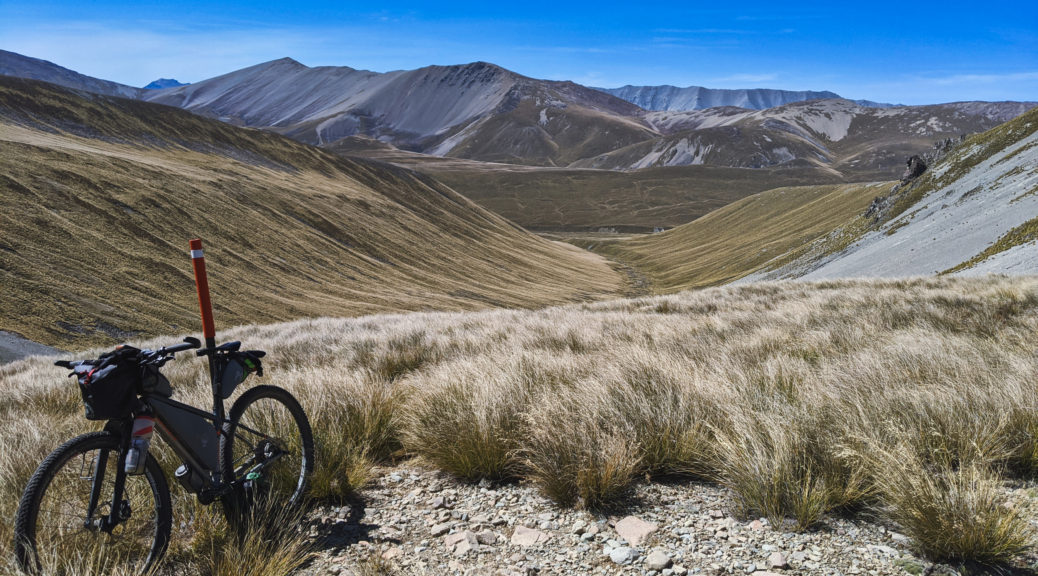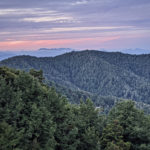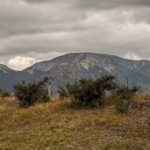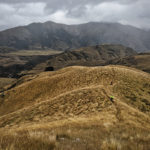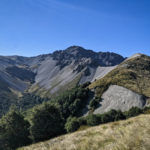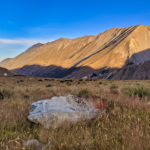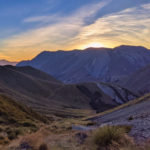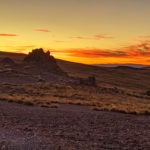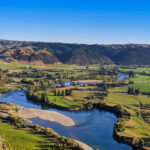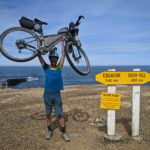I forget when Pete first mentioned a bikepacking race Brian was trying to organise from the top to the bottom of Te Waipounamu (the South Island), down the eastern side of the mountains. Sounding far more of a race than most NZ bikepacking events, it didn’t really sound like my cup of tea – but I was still intrigued by the terrain it might cover. Routing through a lot of private farmland and hiking trail caught my attention as it guaranteed I’d not seen those sights before. But it sounded as though it would be invite only, and never having met Brian, I promptly forgot about it – expecting I wouldn’t get the opportunity.
Late August, Brian was seeking entries and Pete had thrown his hat in the ring and extended Brian’s “share with anyone who might be capable & interested” to me. Less than two hours later my hat was also there, accompanied by a hastily written bikepacking and general adventuring resume – which was a strange thing to compile. This sentence from my application sums up my motivation nicely, which was the point really: “TTW appeals for the promise of the remoteness, much climbing and most of all seeing many different parts of our country that I’ve not managed to see yet.”.
To my surprise, three weeks later my application was accepted. Fully expecting this to be the toughest thing I’d done, mostly due to extensive hike-a-bike on unrideable mountainous terrain, thoughts turned to how I might prepare for it. Along with all the bikepacking that is simply part of my life (an excellent Six Corners and West Coast tour, and my failure to finish my own HBAT event shortly after stand out), I really needed to work on upper body strength and try to reduce how much kit I was carrying.
I managed to get along to one of Amanda’s many TTW training rides, before the Christmas rush; training was then halted abruptly when I innocuously dislocated my shoulder again. Enforced rest ensued, but after the initial concern that I’d have to withdraw from both the Great Southern Brevet (had been looking forward to it for two years) and TTW, my shoulder settled and with two flat, easy bike commutes in my legs I was off to the GSB.
Determined to take GSB21 easier than GSB19 (the wind!), I managed to ride into some form of bikepacking fitness halfway through the week, get plenty of sleep and recovery, eat a lot, test out a lighter sleeping, and therefore overall, kit (success!), spend time with excellent people, have a thoroughly good time and come out of it excited for the next adventure.
With only two weeks between events, there was no more bike riding and, as I foolishly attempted to complete the GSB write-ups amongst everything else, sleep became progressively limited. Still, it was a great two weeks basking in the GSB aftermath and preparing for TTW. Nonetheless, I was very relieved to get to Cape Farewell and having no more opportunity for preparation. Thanks to Jo for the bed in Nelson, and Chris for organising the shuttle for a few of us.
Arriving at the start, it was so good to catch up with so many familiar faces from past trips – and a little odd to be in the company of so many whose bikepacking exploits I’ve for many years looked at in awe from the remoteness of the internet. Brian’s briefing Saturday evening was extensive and the takeaways for me were: the enormity of the challenge facing us, the privilege of all the access to private land (not too mention simply being able to ride bikes together in a pandemic-ravaged world) and the colossal amount of time and energy Brian had put into this.
With that imprinted in my mind, the challenge began to reform in my mind as one of simply moving or transporting my bike from one end of the South Island to the other under my own steam, on whatever path Brian had deemed best. In the coming week-plus, this really helped during all those times where I simply could not ride or I did not have the spare energy to do so. So long as I was moving forward along the line on my GPS, even if I wasn’t enjoying having a loaded bike to lug over whatever obstacle lay at my feet, I was getting closer to the goal. As far more experienced, stronger and faster people have pointed out: at particular moments a loaded bike is not always the best tool for the job (running shoes and a light pack would have been better on some days!), but it is the best tool for the whole trip. With so many people intimating feelings of missing out and, startlingly, more people telling me they would be following my dot, I was more determined to make the most of the opportunity presented.
With nothing left to do, I finally got a decent night’s sleep and rolled out on the inaugural Tour Te Waipounamu excited for the challenge ahead. With no expectations and just hoping to make it to the end having seen a lot of country (little night riding planned), I started slowly – happy to hang out with fellow riders and stopping to eat when non-bike food was on offer. After two easy days first up, the third day was a massive step-up and challenge (65 km in 14 hours, not a lot of riding in there!) – but having survived that, I was confident I would finish (barring any mechanical or physical catastrophe).
 At the start, ready to go. Photo taken from hikebikecake.com – check out the other riders and rigs.
At the start, ready to go. Photo taken from hikebikecake.com – check out the other riders and rigs.
So it came to be; I had some of my most challenging days with a bike, but moving forward however slowly got me there. I’m very pleased, and more than a little proud, to have completed it. The course was just plain tough, and while there was much I simply did not enjoy riding – although the scenery was spectacular, the places new to me and the company good – I relished the challenge and that was more than enough to keep me going. If the weather had been awful (it was excellent, I didn’t notice a headwind until approaching the bottom of the island!), it may have been a different story and I suspect far more people would have withdrawn. With such good weather, it’s hard to compare to GSB19 – which was just as tough for me, but in a quite different way.
A strange thing from a heavily vetted field was that the usual back half of the field was just not there. Having done four hundred kilometres on the first two days, I was near the rear of the racers. That was just plain weird; hats off to everyone out there, truly incredible efforts and so many great stories.
My bike and lighter kit worked well – with enough space to carry two and half days of food too (this I thought the biggest logistical challenge); to my surprise I had no aching of the upper body even after long days of hike-a-bike. The only mechanical issue was breaking a (front) spoke on a very rough, rocky descent in the dark with 300 km to go – the rest of the wheel stayed mostly-true, although I did think of it a lot during the final two days. Carrying a small stuffable backpack to put my sleep kit and water bottle(s) in during hike-a-bike stretches worked very well in reducing the mass of my bike to be pushed, carried and manhandled.

In what is probably an indication of the sanity of the decision, the only other people to ride fully rigid bikes were the three singlespeeders. I certainly wasn’t forking out for a new fork, and it was fine. Sure, a bit bumpy at times but it didn’t really slow me or cause any physical issues. Running a carbon fork also helped in keeping the front of the bike lighter for the hike-a-bike.
With all the uneven surfaces we walked over, the only obvious thing I would do differently is work on ankle strength and flexibility – by halfway down the island, things were very tight and sore. Thankfully with flat pedals I could move my feet around to find a comfortable pedalling spot. It was five days after finishing before I could walk normally and pain-free again; many riders experienced unusual swelling of the lower legs, I assume for similar reasons.
That’s more than enough of a summary of the whole event, I’ll have to get to the daily write-ups. What a week-plus it was; thanks chiefly to Brian for the opportunity to experience it and all the work that went in, also to my fellow TTW riders and all that sent support.
I recommend reading some of the other excellent accounts for different takes on it:
- Ollie’s Tour Te Waipounamu Tale
- Jeff’s Tour Te Waipounamu ride report
- Jeff’s interview with Olly
- Bikepacking.com’s Race Report from Jeff
- Mark’s Tour Te Waipounamu 2021 Race Report
- Amanda’s daily reports, and now her retrospective starts here
- Dulkara’s entertaining collections of stories – one and two
- Tony’s Tour Te Waipounamu…What the hell are we thinking
- Episode 18 of the Pedal On Podcast interviews five finishers, including organiser Brian – a great listen
- Episode 33 of the Overland Archive podcast is an informative listen interviewing Brian.
Post Script
Two weeks since writing that above, and a month since finishing, I’ve finally finished the daily posts. Quite some time before I felt the need to reassemble my bike, the spoke has been replaced and one big day ride with the bike unloaded (!) was fantastic. The desire to see new places, preferably while riding my bike, is still there. While I’ve softened a bit on the “would you do it again?” question, I think there would have to be significant new sections to entice me back – there’s a million things I haven’t done, or seen! While nowhere near the pointy end, not much (almost nothing) went wrong and I don’t feel I’ve got any unfinished business out there – and I doubt the weather will be nearly as good again!
Strangely for such a challenging route, my ride was without both big joyous highs and wallowing pits of despair. I’m unsure why that is, perhaps knowing the whole thing would be a challenge the like of which I’d not attempted before had me on a more even keel? I knew there were many parts I wasn’t going to enjoy for the riding, and they became the parts to be relished for the opportunity to conquer them. Highlights that do stand out are the entire section from the Dampier Range descent to Hamilton Hut – incredible downhill to Anderson Hut, gorgeous ride out through Mt White, trail magic, and the whole Cass section (the beech forest downhill incredible); the evening ride through Mesopotamia Station and Felt Hut; and the ridge riding after Stag Saddle.
Even a month later, the experience is paradoxically difficult to find the right words for and to stop writing about – it must have had a profound effect.
